AMD’s 5 GHz Turbo CPU in Retail: The FX-9590 and ASRock 990FX Extreme9 Review
by Ian Cutress on August 9, 2014 8:00 AM ESTASRock 990FX Extreme9 BIOS
For those that have followed our Z87 and Z97 BIOS coverage, the ASRock BIOS for the 990FX Extreme9 falls very much on the side of Z87, which makes sense as the platform will probably not be seeing many updates, if any, for the foreseeable future. The main screen uses white text on a starry background, with the selected option very clearly defined.
In this main screen we have details of the motherboard name, the BIOS version, the CPU installed, the CPU Speed, the DRAM installed, the per-module density and the current speed of each module. Other information that would be good to have includes the main system voltages, temperatures and fan speeds. Note that ASRock has not yet implemented a system that contains this information across every BIOS screen, unlike some of their competition. On this screen is also an ‘Active Page on Entry’, useful for overclockers that want the BIOS to skip straight into the OC Tweaker menu.
The OC Tweaker menu, as the name suggests, has the overclocking options. ASRock like to add in some automatic overclock options, and here we get the choice from a 5% to a 50% overclock:
Typically the higher overclocks would be outlined in red to indicate an extreme overclock, but ASRock does not do that here. The rest of the OC Tweaker menu has the CPU configuration settings, DRAM Timing options and Voltage configuration. Load Line Calibration is a single option in the voltage section, and the DRAM Timing Control is a separate menu item for memory sub-timings:
The Advanced tab contains options for enabling/disabling controllers, adjusting SATA modes and implementing some power saving features. The Tool menu next is where ASRock has their more interesting features, such as System Browser that gives an overview of the motherboard and tells the user what is installed:
The Online Management Guard feature displays a timetable for the week and allows the user to disable the network features. One of the major purposes of this feature is for adults to restrict their children’s use of the internet at odd hours of the day.
The Dehumidifier function keeps fans enabled after the system has switched off in order to equilibrate the temperature inside the case with the temperature outside the case. In the event of warm, moist air in the case that cools in the evening, in humid climates this may cause condensation, hence this feature. There are also menu options to save user profiles within the BIOS underneath this setting.
The Fan Controls are how ASRock used to do them, in terms of ‘levels’, with the higher the level indicating how quickly the CPU fan power would ramp up. Some of the headers have the option of tying the fan power to the CPU temperature, meaning that if the CPU temperature rises above a value, the fan is placed on full speed until the target temperature is reached.
The BIOS finishes up with boot options and security. One missing feature from ASRock BIOSes is a boot override feature, allowing for a one-time boot from within the BIOS.
ASRock 990FX Extreme9 Software
The software for the Extreme9 is centered around the ASRock Extreme Tuning Utility, or AXTU for short. AXTU used to be the main interface, until A-Tuning came about for Intel’s 8-series motherboards, but due to the age of the motherboard (or perhaps incompatibilities) this software has not been upgraded.
The screen that pops up first with AXTU is the Hardware Monitor interface. This shows the CPU speeds, base frequencies and multipliers, as well as the fan speeds, temperatures and voltages. Two key bits of information missing are the CPU installed and the motherboard which is being used.
AXTU also is part of the fan control:
The fan controls here are similar to that in the BIOS, relying in the ‘level’ system to determine the gradient at which the fan speed is ramped up. Users can select a target temperature which will put the fan at full speed when the CPU is above the target.
The overclocking interface offers several simple options, although no automatic overclocking setups. Here we can adjust the base frequencies, the multipliers and the voltages, although nothing along the lines of load-line calibration.
AXTU also provides an interface to save the BIOS and some power saving features, but also XFast RAM. This feature allows the user to partition off some of the memory into a RAMDisk, and AXTU will also manage some caching options in order to speed up some of the operating system functions.
While ASRock has dropped XFast USB with the latest Intel 9-series motherboards, the software is here on the Extreme9 and implements newer USB protocols to increase peak transfer speeds at the expense of latency. In our copy tests, the XFast feature does provide a tangible benefit, although the feature is limited to one USB device at a time.
XFast LAN is a licensed and skinned version of cFos, which allows for software manipulation of network priority.



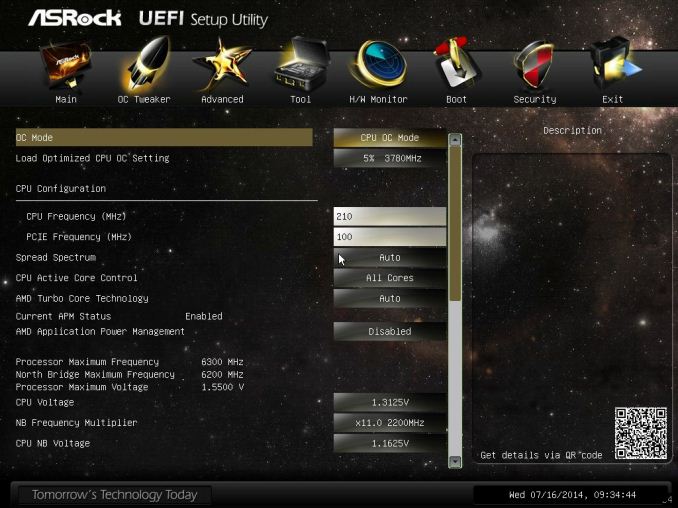
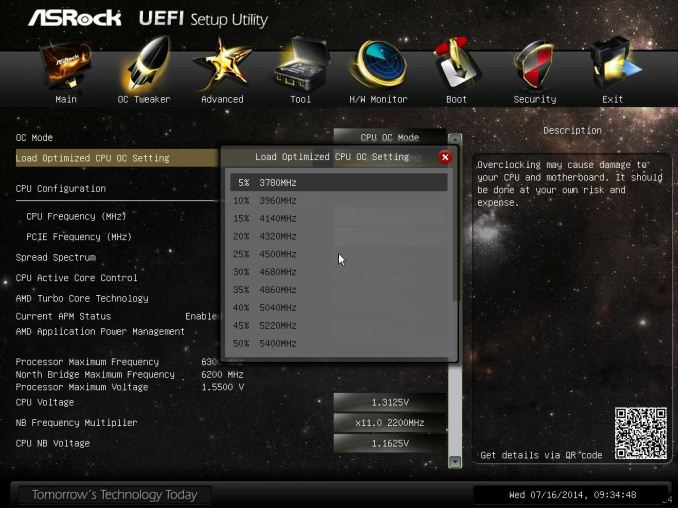
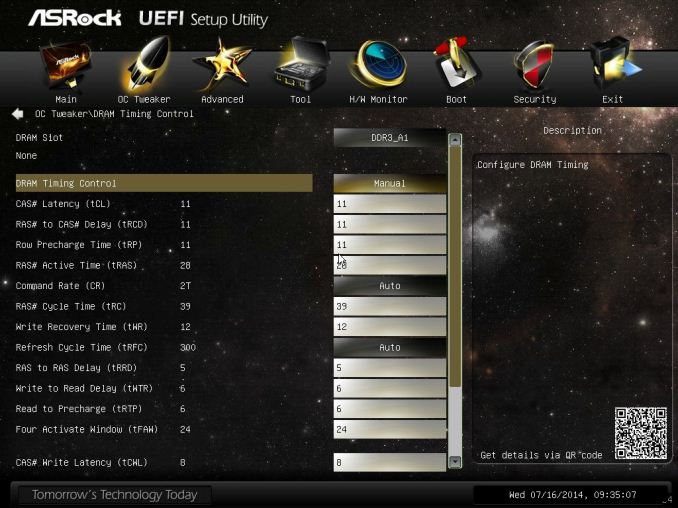

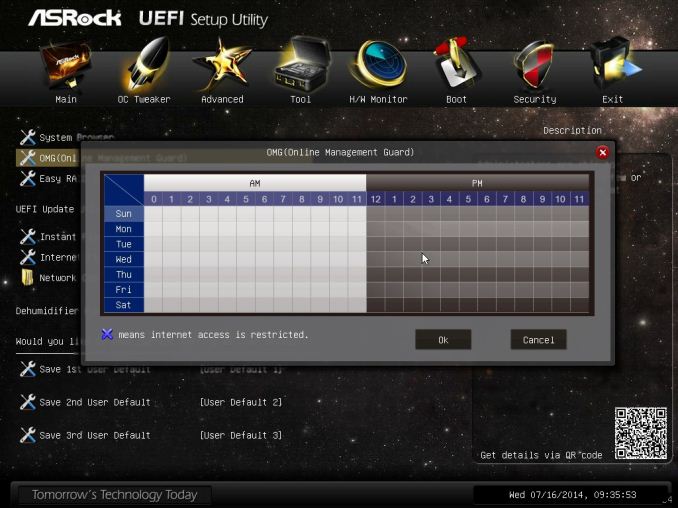

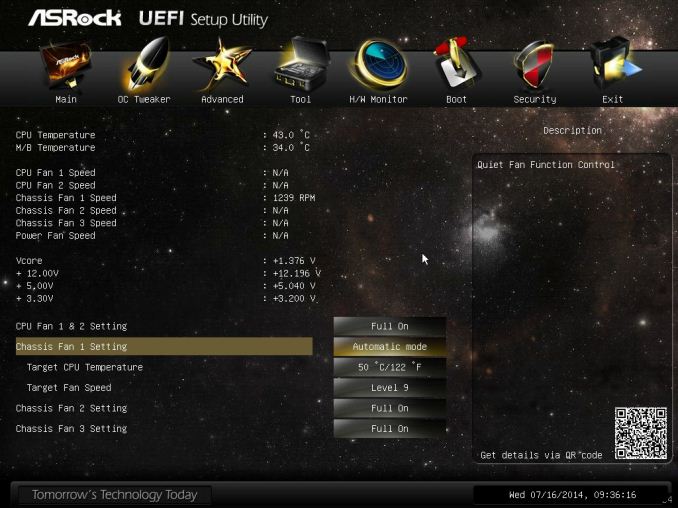







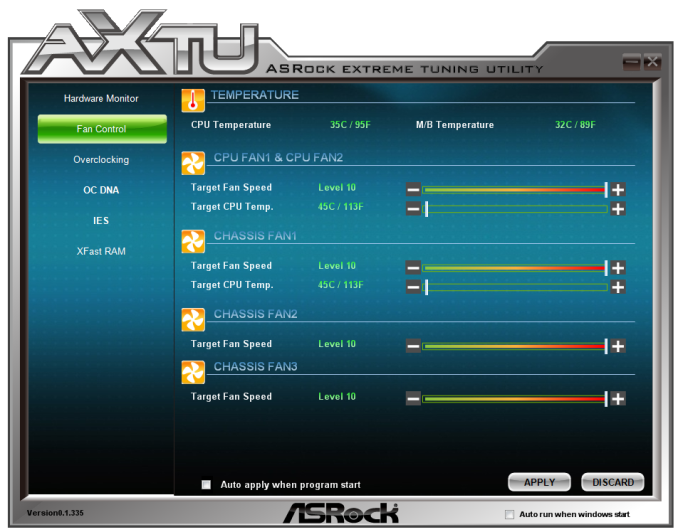
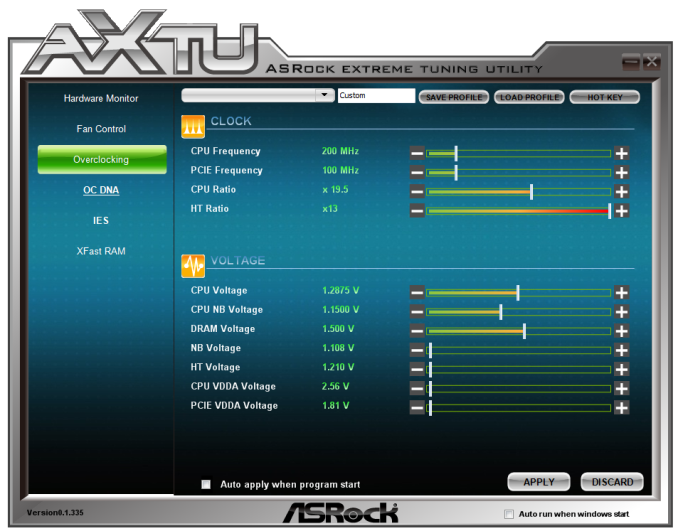

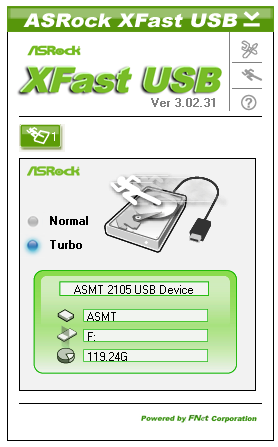
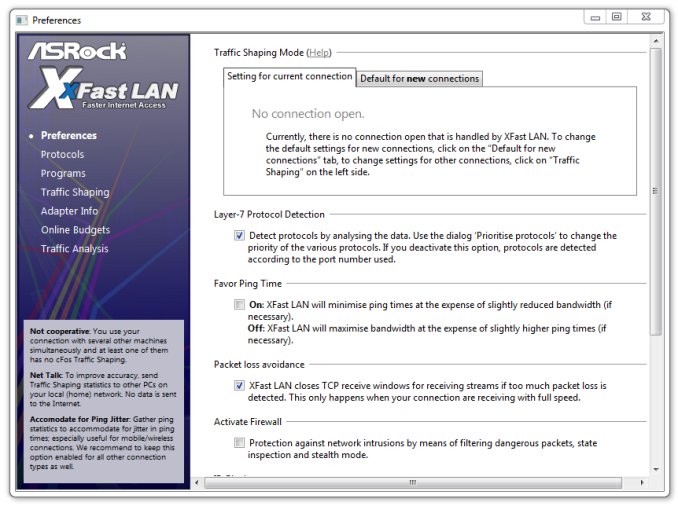














146 Comments
View All Comments
Budburnicus - Wednesday, January 14, 2015 - link
Umm you KNOW that even stock clocked that the i7-3770K is better and faster in EVERY way, than the 9590 OCed to the max, right?You also know that while you saved, literally, a couple bucks on BUYING your hardware - you are going to spend, comparatively, hundreds of dollars more running it for even 2 years!
Oh then there is the effect that the HUGE power draw has on components - mobos, PSUs, video cards, RAM - because ALL of it gets effected by the insane heat - and certainly ALL of it will be effected if you short your PSU!
And i7-3770K at stock frequencies out performing this POS FX 9590 - is NOT synthetic! That is real world PROVEN speed! NTM, you can EASILY hit 4.7 GHz on any SandyBridge chip - which will not only yield MUCH better performance, but will suck less power and be more reliable as well! And you aren't even going to have to spend that much to buy a good Z77 board and an i5/i7 2500k/2600k (ASRock Z77 Extreme 4 runs right around $100 right now, and is FAR from any budget board, and in fact has more features than ANY FX board that could run this 220W POS!)
So pat yourself on the back, you saved a few bucks on hardware! BUT you completely sacrificed ALL performance, and ANY reasonable upgradability! Also, you will end up paying FAR more than you saved in power costs! (I am sure your power company will thank you for choosing an AMD space heater for a CPU!)
Well on that note, you may save a few bucks on heating, given you live somewhere that gets colder than 50 degrees (Fahrenheit) at some point in the year anyway.
Budburnicus - Wednesday, January 14, 2015 - link
LMAO! Cult - you are such an AMD fanboy NOOB! It is not a cult when PERFORMANCE and EFFICIENCY are the deciding factors!And again, you saved a few bucks when buying your already outdated POS AMD space heater - just wait til that power bill comes!
And if you seriously cannot afford an i5/i7 K processor, even a Sandy or Ivy Bridge, and a Z77 or newer chipset, what the hell good is faster ram and an SSD going to do you? None, unless your workload is entirely composed of highly multi threaded compression/encoding etc.
Have fun with your 220W space heater that has to compete against i3 CPUS! LMFAO!
Budburnicus - Saturday, January 10, 2015 - link
Just another instance of AMD CHUGGING power and crapping performance! Combine this FLOP of a chip (220 W TDP - sweet Jesus! At STOCK) with an R9 290X (300 W TDP, again holy sh*t!) and you are up to over 500 watts TDP!Compare this to an Intel i7-5930K (140 W TDP) paired with a GTX 970 (148 W TDP) and you are ONLY at 288!
Not ONLY that, but the Intel is faster BY FAR at stock speeds, as well the GTX 970, while costing only $30 more - provides ~10%-25% frame rates in basically EVERY benchmark!
I just feel sad for AMD anymore... I am guessing they are too busy with owning ATI and TRYING to compete with SandyBridge and newer Intel products (My i7-2600K beats this FX chip at STOCK speeds in most benchmarks - and basically ALL gaming benchmarks! And that is not even mentioning that the 2600K easily hits 4.4 GHz on any decent mobo/chipset! Then there is the fact that the 2600K is THREE years old, only 95 W TDP - which will NEVER go above 125 even at the 4.7 GHz/102.3 Bclock OC I run!)
AMD should have realized this Chip's Architecture was DOA with the first PileDriver CPUs falling FAR behind the Phenom 2 1100Ts! And even now the 1100Ts generally have better gaming performance!
The REAL question is, WHY? Why have they not dropped this design and brought us a new one? I mean they could try it with limited releases to test it at VERY least, but I hear no word whatsoever about AMD being anywhere close to a completely new chip design!
I was a staunch "AMD Fan-boy" back in the Pentium 4/Athlon XP days! They WERE far better! Also back then ATI could actually compete in gaming!
Now? AMD is only good for budget gaming builds - parts like this FX chip are just about pointless - apart from people who already own a good socket AM3+ mobo. But buying this chip for a breand new build? That would be a HORRIBLE idea! Only the biggest fans of AMD would waste such money and power..
And AMD VideoCards - yes they have better compute performance - so yeah, if you are still GPU mining new Crypto's (Like VertCoin's Lyra2RE Algorithm) - buy an AMD GPU, but 2 or 3 if that is your goal! But even then, apparently the HD 7000 series are STILL the best miners, as they do not consume INSANE amounts of power and do NOT run at a "SAFE 95 deg C" (AMD's quote on R9 290X operating temp!) So, whereas Nvidia and Intel move forward with less power consumption, cooler temps, and better performance where it matters, it REALLY seems AMD is taking steps backwards!
SviatA - Friday, October 30, 2015 - link
So this motherboard suits basically for those who will overclock the processor, graphics and RAM.Honestly, I don't know why would any purchase a AM3+-based motherboard since we have to wait for eight months only to get some AMD Zen processors that are (at least on paper) much better than FX. So, I am thinking about the new motherboard and a new processor. Since Doom 4 will come out next year, will have to get something better than my current configuration, that is based on the ASRock 970 R2.0 (BTW, this is a pretty good MB, have bought it here - http://hardware.nl/asrock/970-extreme3r20.html almost two years ago and happy with it)
Beljim - Saturday, January 9, 2016 - link
Do not buy from Asrock. You will be on your own.
I bought an Extreme9 just before Christmas 2015. Went to raid my 2 Crucial 512gb SSDs and computer would not see them. Called Asrock tech and they told me certain makes of SSDs are not compatible with Extreme9 boards. I explained that SSDs were much older and Asrock board should be backwards compatable. He gave me a short list of drives that were compatible and said I'd have to buy new drives. Asrock took no responsibility and were in no way helpful.
paradonym - Wednesday, February 17, 2016 - link
Where's the described M.2 Slot? Ctrl+F'ing the manual for M.2 doesn't shows up any point.